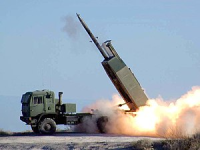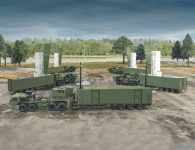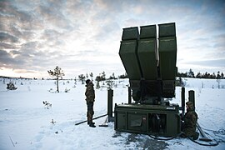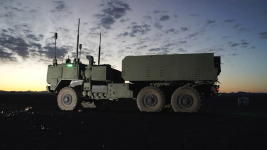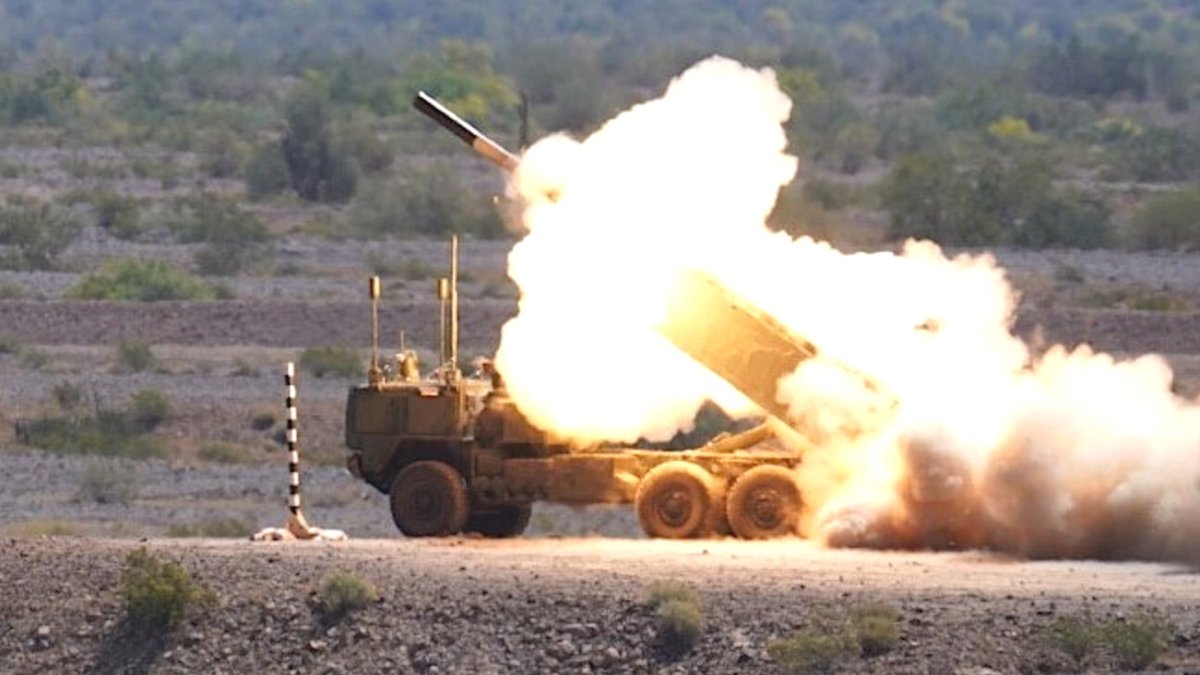- Reaction score
- 11,886
- Points
- 1,160
Seeing as how I brought it up ---
What is an MDTF or Multi Domain Task Force?
Per the Congressional Research Service

 www.everycrsreport.com
www.everycrsreport.com
And what can it do? - From a pilot exercise during RIMPAC 2018

 www.defensenews.com
www.defensenews.com
.....
Why is it important to Canada?
Firstly, because it is important to the US.
Secondly it appears that the US is actively developing and deploying the concept and that the concept will be employed in a Canadian context.
The one in the Arctic Region is the one of particular interest to Canada. Currently it has been tasked as a third Indo-Pacific Command asset along with the two originally planned.
The 1st MDTF is headquartered and based at JLBM in Seattle
The 3rd MDTF is based at JLBM in Seattle but headquartered in Hawaii
The 4th MDTF is headquartered and based at Fort Carson, Colorado
All three of these are focused on the Indo-Pacific
The 1st and 3rd are collocated with I Corps
The 4th is collocated with III Corps
The 2nd MDTF is based at Fort Drum in New York but headquartered at Wiesbaden in Germany
It is focused on Europe with V Corps.
The 5th MDTF is based and headquartered at Fort Liberty, North Carolina.
It shares its base, and global responsibilities with XVIII Corps.
The tasking has left a couple of blanks in the original plans and those blanks concern the US Congress and should concern Canada.
The Arctic "problem" arises from looking at the world on a Mercator Projection with the Americas at the center, the Pacific and Asia to the left and the Atlantic and Europe to the right along with Africa. The Arctic subtends all three of those orange slices. And Canada sits right in its center, on top of the US, with coastal interests in the Atlantic, Pacific and the Arctic.
Canada is already integrated into the US defence plan via NORAD whose commander also commands Northern Command, the command with responsibility for the Continental US, Alaska and Canada and, courtesy of its NORAD focus is north facing through the North Pole to Russia.
The Orange Slice effect that creates the three Command conflict also creates a three Command opportunity. Bases situated in the arctic can profit from the shortening distances between lines of longitude as you go north. Effectively one base located at or close to the North Pole, equipped with suitably long ranged weapons, can protect the flanks of all three commands (Indo-Pac, North and Europe) with protective fires. Russia is actively pursuing that basing capability.
The US is geographically a bit behind the curve because Alaska's most northerly point, the closest point of approach to the North Pole is at 71N or 2100 km south of the Pole. Russia has well developed and permanently inhabited bases as far north as 80N on sovereign territory or 1000 km from the Pole, half the distance of the US's nearest point of approach.
There are three other possible points of exploitation available to the US. One is its airfield on Greenland at Thule (renamed recently) at 77 N or 1400 km from the Pole. The most northerly point on Greenland is at 83 N, or 700 km from the Pole, but there is no developed infrastructure that far north.
Norway has an active community on Svalbard at 78 N and the islands extend to 80 N but they are shared in co-dominium with Russia and is restricted to civil use only. Besides, Russia has its on base on the islands and has invited China to come and visit.
Which leaves Canada.
Our closest point of approach is Alert on Ellesmere Island at 82 N, or 800 km from the Pole. That would put the base about 200 km further north than the Russian bases and, even though it has only rudimentary infrastructure it does have some developed infrastructure. And most importantly, it is sovereign territory with nobody claiming co-dominium rights.
It makes for a useful firing point from which to dominate the northern flanks of the US Indo-Pac Command, North Command and Euro Command.
.....
So what capabilities does the MDTF bring to the theater commander?
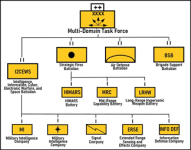
First off it is a mobile structure by virtue of its integral Brigade Support Battalion and its Air Defense Battalion which allows it to push forward into the enemy's engagement zones.
Secondly it brings an ability to co-ordinate intelligence and direct its weapons at long ranges against enemy forces, fixed and mobile, to make it harder for the enemy to maintain operations from their advanced bases. It makes it harder to establish a Crimea like base of operations by making Russia's arctic bases less tenable.
Thirdly it brings the ability to sense the environment and enemy operations, conduct military intelligence activities and direct non-kinetic electronic and cyber attacks on the enemy or Operations Other Than War - hybrid operations. That would coincide with a lot of existing and planned Canadian and US capabilities.
Finally, and crucially from my point of view, the MDTF has the ability to fly in to theater, on aircraft ranging from C130s and up, a variety of Long Range Fires.
Those fires are not held in theater, generally speaking, although the Europeans seem to be actively promoting forward basing of the LRF Battalion currently because of the situation in Ukraine. Currently the tendency seems to be to forward base the HQ and the MDEB (Multi Domain Effects Battalion aka I2CEWS Battalion) while holding the actual weaponry, both Long Range and Air Defense, to the rear along with the logistics support.
...
....
It seems that the MDTF, with all its Long Range and Air Defence capabilities is becoming integral to the US way of war and every regional commander, including the North Command commander, is going to expect to have access to those capabilities.
Given that the MDTF is coming to Canada's backyard just as it has come to the Scandinavians, the Japanese and the Australians, as well as the Brits and the Europeans.
Our best plan is to get it incorporated into the NORAD dual command system so that we have some say over how, when and where those long range fires, and air defence, capabilities might be used.
What is an MDTF or Multi Domain Task Force?
Per the Congressional Research Service
In the Army’s Chief of Staff Paper #1: Army Multi-Domain Transformation Ready to Win in Competition and Conflict dated March 16, 2021, the Army described the Multi-Domain Task Force (MDTF) as “theater-level maneuver elements designed to synchronize precision effects and precision fires in all domains against adversary anti-access/ area denial (A2/AD) networks in all domains, enabling joint forces to execute their operational plan (OPLAN)-directed roles.”
MDTFs are designed to support freedom of action of U.S. forces. MDTFs are to be scalable from operational to strategic level and can be modified to support the needs of individual commanders. MDTFs also provide supported commanders the ability to plan, integrate, control, track, and assess the effectiveness of joint counter-A2/AD activities.

The Army’s Multi-Domain Task Force (MDTF)
And what can it do? - From a pilot exercise during RIMPAC 2018

Multidomain Operations Task Force cuts teeth in Pacific
Recent exercises in the Pacific have given the Army's new Multidomain Operations Task Force Pilot Program a wealth of opportunity to refine its doctrine.
It was initially envisioned that the pilot program would be no more than 2,000 people, but the service is finding that it needs roughly 400-500 core personnel that are considered essential.
The Army designated the 17th Field Artillery Brigade out of Joint Base Lewis-McChord, Washington, to be the core unit of the task force.
While it was not the task force pilot’s first exercise (that was Talisman Sabre in Australia in 2017), the pilot program played an integral role in RIMPAC, conducting, in one example, multiple live-fire engagements against a maritime target off the coast of Kauai, Hawaii.
...
The task force pilot successfully conducted a high-mobility rapid infiltration on a C-17 aircraft from Lewis-McChord, from Washington to Kauai, and set up an effective mission command from Kauai and Schofield Barracks, Hawaii, that demonstrated the ability to rapidly project power to create new land-based threats for adversaries.
The MDTF also successfully integrated Gray Eagle unmanned aircraft systems, AH-64E Apache attack helicopters in manned-unmanned teaming formations, and P-3/P-8s into the Link 16 network.
The task force, in a combined exercise, sunk the decommissioned landing ship tank Racine as part of the exercise, and shot down two aircraft in a simulation using an Avenger air-defense system and a man-portable system.
“We need to totally integrate as a joint force,” Brown said. “We depend on the other services’ capabilities we don’t have, but we want to present the commander and leadership with options because we are integrated so well.
The Army and the other services were able to connect things “across the board that had never been connected,” such as using ballistic missile defense and air defense artillery to go after cruise missiles, as well as linking sensors and shooters, owned by multiple services, “in ways that had never been done before,” Brown said.
The Army also tested manned-unmanned teaming, used prolifically in Iraq and Afghanistan with AH-64Es and Gray Eagles. The service tried it in a maritime environment during RIMPAC, but also linked these assets to other maritime and air assets “like they never were before,” according to Brown.
.....
Why is it important to Canada?
Firstly, because it is important to the US.
Congress has expressed concern about the threat to U.S. national security posed by Russia and China. The Army believes to address this threat, it must be able to operate in a multi-domain (air, land, water, space, cyber, information) environment, requiring new operational concepts, technologies, weapons, and units. The Multi-Domain Task Force (MDTF) is the Army’s self-described “organizational centerpiece” of this effort.
Secondly it appears that the US is actively developing and deploying the concept and that the concept will be employed in a Canadian context.
The Army originally planned to build five MDTFs:
two aligned to the Indo-Pacific region;
one aligned to Europe;
one stationed in the Arctic region and oriented on multiple threats;
and a fifth MDTF aligned for global response
The one in the Arctic Region is the one of particular interest to Canada. Currently it has been tasked as a third Indo-Pacific Command asset along with the two originally planned.
The 1st MDTF is headquartered and based at JLBM in Seattle
The 3rd MDTF is based at JLBM in Seattle but headquartered in Hawaii
The 4th MDTF is headquartered and based at Fort Carson, Colorado
All three of these are focused on the Indo-Pacific
The 1st and 3rd are collocated with I Corps
The 4th is collocated with III Corps
The 2nd MDTF is based at Fort Drum in New York but headquartered at Wiesbaden in Germany
It is focused on Europe with V Corps.
The 5th MDTF is based and headquartered at Fort Liberty, North Carolina.
It shares its base, and global responsibilities with XVIII Corps.
The tasking has left a couple of blanks in the original plans and those blanks concern the US Congress and should concern Canada.
Possible oversight issues for Congress include the following:
• In view of the Army’s 2024 Force Structure Transformation announcement and April 2024 update, it now appears the Army has changed its original MDTF alignment plans, which included an Arctic-focused MDTF and a CENTCOM-focused MDTF. Does the Army’s February 27, 2024, announcement and April 2024 update now constitute the Army’s official MDTF alignment plan? If so, how does the Army intend to address Arctic and CENTCOM-based MDTF capabilities requirements?
• The Arctic region is the responsibility of three Combatant Commands: U.S. Northern Command, U.S. European Command, and U.S. Indo-Pacific Command. How does this shared responsibility affect the alignment, command and control, and responsibilities of the Army’s MDTFs?
The Arctic "problem" arises from looking at the world on a Mercator Projection with the Americas at the center, the Pacific and Asia to the left and the Atlantic and Europe to the right along with Africa. The Arctic subtends all three of those orange slices. And Canada sits right in its center, on top of the US, with coastal interests in the Atlantic, Pacific and the Arctic.
Canada is already integrated into the US defence plan via NORAD whose commander also commands Northern Command, the command with responsibility for the Continental US, Alaska and Canada and, courtesy of its NORAD focus is north facing through the North Pole to Russia.
The Orange Slice effect that creates the three Command conflict also creates a three Command opportunity. Bases situated in the arctic can profit from the shortening distances between lines of longitude as you go north. Effectively one base located at or close to the North Pole, equipped with suitably long ranged weapons, can protect the flanks of all three commands (Indo-Pac, North and Europe) with protective fires. Russia is actively pursuing that basing capability.
The US is geographically a bit behind the curve because Alaska's most northerly point, the closest point of approach to the North Pole is at 71N or 2100 km south of the Pole. Russia has well developed and permanently inhabited bases as far north as 80N on sovereign territory or 1000 km from the Pole, half the distance of the US's nearest point of approach.
There are three other possible points of exploitation available to the US. One is its airfield on Greenland at Thule (renamed recently) at 77 N or 1400 km from the Pole. The most northerly point on Greenland is at 83 N, or 700 km from the Pole, but there is no developed infrastructure that far north.
Norway has an active community on Svalbard at 78 N and the islands extend to 80 N but they are shared in co-dominium with Russia and is restricted to civil use only. Besides, Russia has its on base on the islands and has invited China to come and visit.
Which leaves Canada.
Our closest point of approach is Alert on Ellesmere Island at 82 N, or 800 km from the Pole. That would put the base about 200 km further north than the Russian bases and, even though it has only rudimentary infrastructure it does have some developed infrastructure. And most importantly, it is sovereign territory with nobody claiming co-dominium rights.
It makes for a useful firing point from which to dominate the northern flanks of the US Indo-Pac Command, North Command and Euro Command.
.....
So what capabilities does the MDTF bring to the theater commander?

First off it is a mobile structure by virtue of its integral Brigade Support Battalion and its Air Defense Battalion which allows it to push forward into the enemy's engagement zones.
Secondly it brings an ability to co-ordinate intelligence and direct its weapons at long ranges against enemy forces, fixed and mobile, to make it harder for the enemy to maintain operations from their advanced bases. It makes it harder to establish a Crimea like base of operations by making Russia's arctic bases less tenable.
Thirdly it brings the ability to sense the environment and enemy operations, conduct military intelligence activities and direct non-kinetic electronic and cyber attacks on the enemy or Operations Other Than War - hybrid operations. That would coincide with a lot of existing and planned Canadian and US capabilities.
Finally, and crucially from my point of view, the MDTF has the ability to fly in to theater, on aircraft ranging from C130s and up, a variety of Long Range Fires.
Those fires are not held in theater, generally speaking, although the Europeans seem to be actively promoting forward basing of the LRF Battalion currently because of the situation in Ukraine. Currently the tendency seems to be to forward base the HQ and the MDEB (Multi Domain Effects Battalion aka I2CEWS Battalion) while holding the actual weaponry, both Long Range and Air Defense, to the rear along with the logistics support.
...
The 1st MDTF is headquartered at Joint Base Lewis-McChord, WA and aligned to the U.S. Army Pacific. Since its 2017 activation, it has participated in a variety of exercises. In February 2023, the 1st MDTF’s long-range fires battalion, 5th Battalion, 3rd Field Artillery Regiment, deployed a LRHW system over 3,100 miles from Joint Base Lewis-McChord to Cape Canaveral, FL, during Thunderbolt Strike, a full rehearsal of expeditionary hypersonic launch capabilities.
The 1st MDTF is to be fully established in FY2024 with a Multidomain Effects battalion (MDEB), an IFPC battalion, a BSB, and a LRFB.
On April 13, 2021, the Army announced it would station its 2nd MDTF in Germany. The Germany-based MDTF is to support U.S. Army Europe and Africa. On September 16, 2021, the Army activated the 2nd MDTF at Clay Kaserne in Wiesbaden, initially consisting of a headquarters element; an intelligence, cyberspace, electronic warfare, and space detachment; and a brigade support company.
On December 13, 2023, Senator Charles Schumer and Representative Elise Stefanik announced in 2025 Fort Drum, NY, would become the home of 1,495 soldiers and personnel from the 2nd MDTF’s Long-Range Fires Battalion, Brigade Support Battalion (BSB), and Air Defense Battalion. The 2nd MDTF’s Headquarters and Effects battalions, activated in 2021, would remain in Germany.
The 2nd MDTF is to be headquartered in Germany with an MDEB and other elements stationed at Fort Drum, NY, with an IFPC battalion, a BSB and an LRFB. The 2nd MDTF is to be fully operational in FY2025 with the addition of the LRFB in FY2026. The 2nd MDTF is to focus on supporting the European theater.
The Army activated the 3rd MDTF at Schofield Barracks, Hawaii, in September 2022. The 3rd MDTF is to support the U.S. Army Pacific as a component of U.S. Indo-Pacific Command (USINDOPACOM). The 3rd MDTF participated in its first exercise May 4-19, 2023, as part of exercise Northern Edge 23-1.
The 3rd MDTF, headquartered in Hawaii with an MDEB, will have an IFPC battalion, a BSB and an LRFB stationed at Joint Base Lewis-McChord, WA, and is to be fully operational by FY2026.
The 4th MDTF is to be stationed at Fort Carson, CO, but focused on the Indo-Pacific theater, and is to be fully operational by FY2027.
The 5th MDTF is to be stationed at Fort Liberty, NC, and is to concentrate on regions as determined. The 5th MDTF is to be fully operational by FY2028.
....
It seems that the MDTF, with all its Long Range and Air Defence capabilities is becoming integral to the US way of war and every regional commander, including the North Command commander, is going to expect to have access to those capabilities.
Given that the MDTF is coming to Canada's backyard just as it has come to the Scandinavians, the Japanese and the Australians, as well as the Brits and the Europeans.
Our best plan is to get it incorporated into the NORAD dual command system so that we have some say over how, when and where those long range fires, and air defence, capabilities might be used.


